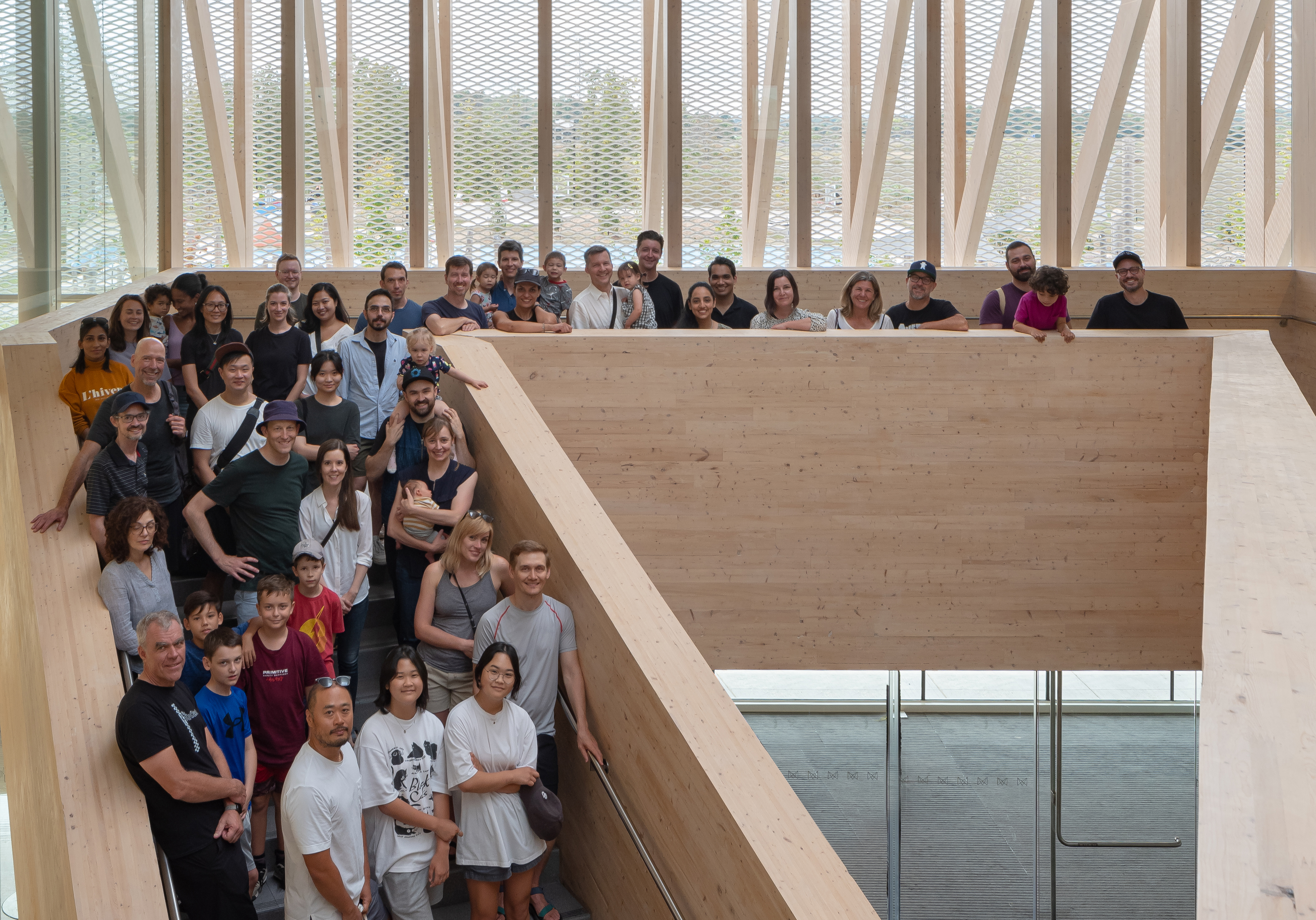Project Location: St. Catharines, Ontario
Project Architect(s): MacLennan Jaunkalns Miller Architects, Ltd. (MJMA) in association with Raimondo + Associates Architects Inc.
Project Completion Date: 2022/Feb/25
Building Gross Floor Area: 528 m2 (5,680 square feet)
Energy Use Intensity (EUI) (ekWh/m2/year) : 83 kWh/m² before PV array generation
Greenhouse Gas Intensity (GHGI) (tCO2e): N/A
Annual Potable Water Consumption (L/person/year): N/A
The Neil Campbell Rowing Centre (NCRC) was constructed for the 2022 Canada Summer Games and will continue Henley Island’s tradition as a competition venue (including having hosted the 2024 World Rowing Championships), while also serving as a year-round training centre for athletes. The 528 m2 building houses an entry space, rowing ergometers, a weight-lifting gym, lounge, and universal change/washrooms. The NCRC is sited to configure a previously ill-defined staging area that is further bounded by existing storage sheds, the natural topography of a hill, and Martindale Pond.
Building Orientation & Layout
The facility is a beacon guiding racers along the watercourse and an assembly point at the heart of the island. Its design inverts the opacity of the typical boat shed and introduces aspects of the “glass house,” reimagining these typologies as a new functional and social amenity. for competition happen within this new Quad, heightening the spectacle of the race. Its form is engendered by its biased overhanging roof, designed with an innovative mass timber system. Wrapped in triple-glazing and adding a stepped edge to replace an overgrown riprap berm that acted as a barrier, the building connects athletes and spectators to one another and to the water.
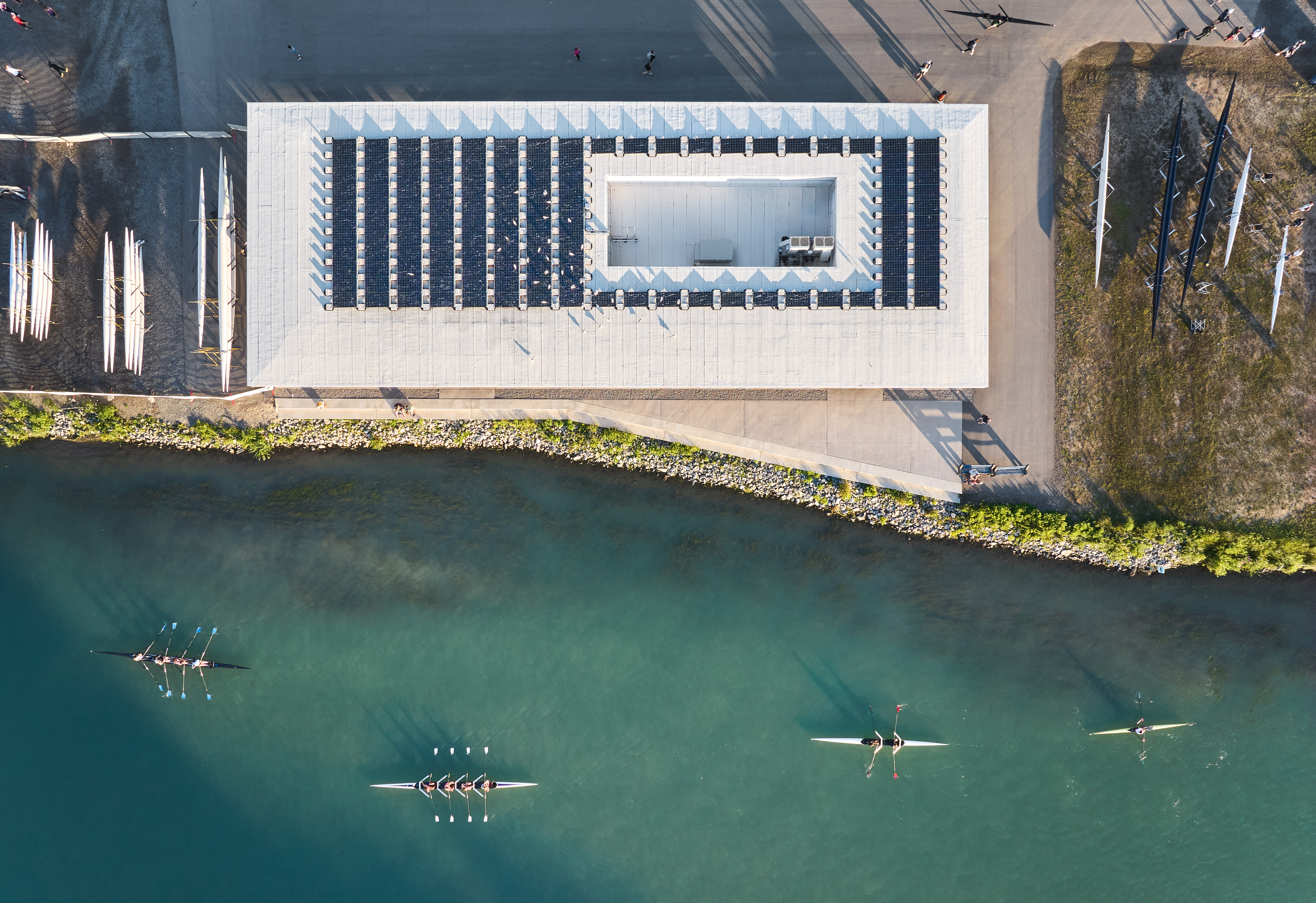
Energy
The facility showcases innovative design that prioritizes environmental and social responsibility. Its mass timber composite roof, featuring cross-laminated timber (CLT) and glulam beams, minimizes embodied carbon to 343 kg-CO2e/m². The building achieves Zero-Carbon Emissions and Net-Zero Energy Design, utilizing passive strategies like robust materials, large sliding doors, and roof overhangs for cross-ventilation. High-performance features include Passive House-certified curtainwalls with triple glazing, low-flow fixtures, and fully electric systems, generating 0 kWh/m²/year through a rooftop photovoltaic (PV) array. Aesthetic mass timber elements enhance community gathering spaces while reducing carbon emissions, and the facility's design facilitates sustainable education, encouraging users to engage with energy performance actively.
Lighting power density: 5.27 W/m²
90.1-2013 LPD allowance: 8.28 W/m²
% reduction from ASHRAE: 36.4%
EUI = 0 kWh/m2/yr, based on the PV offset. (83 kWh/m² before PV array generation)
Total Energy Use: N/A
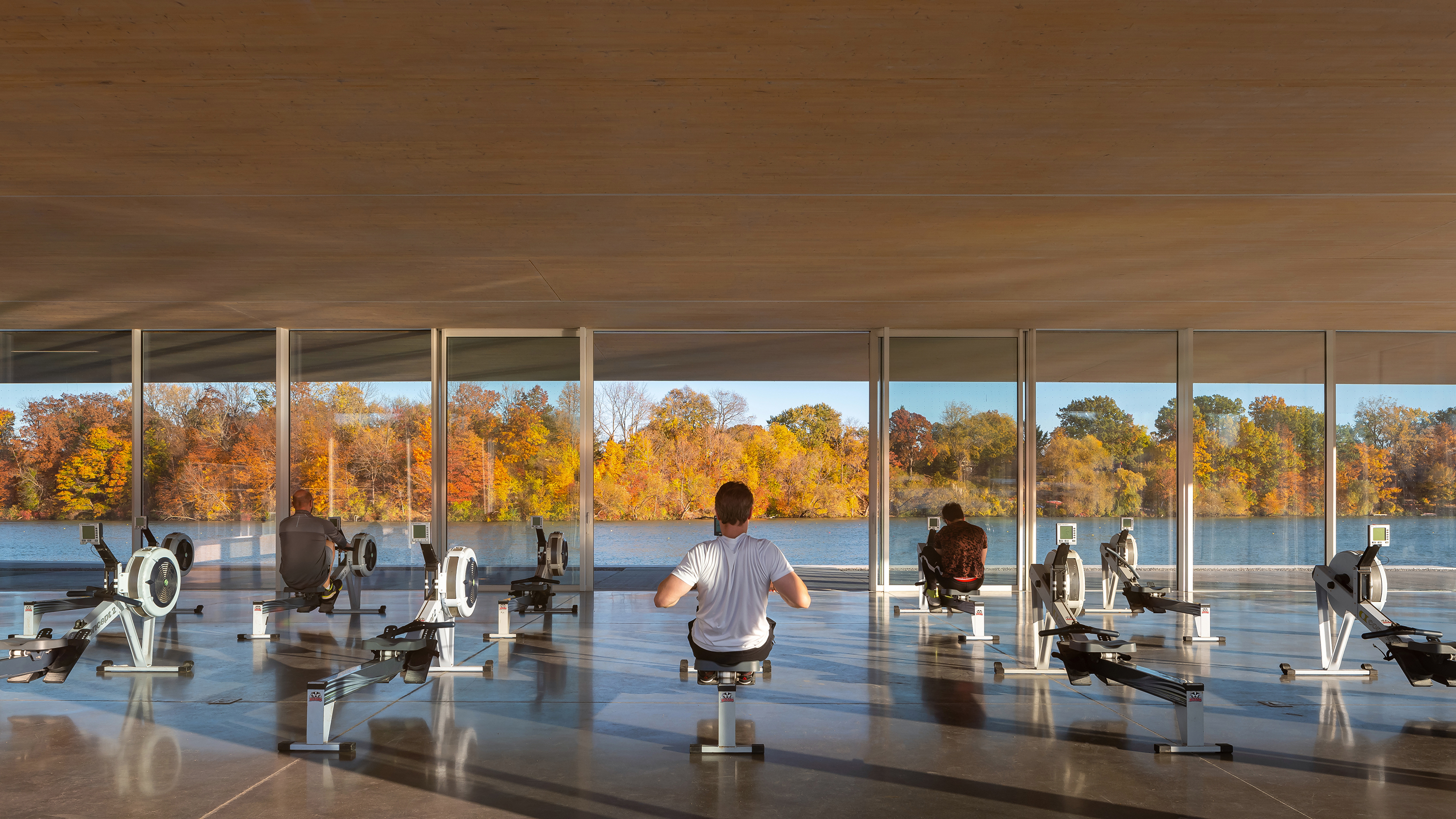
Materials & Construction
The Rowing Centre is also designed with robust material choices, meeting the client’s desire to minimize operating and maintenance costs, and an innovative Mass Timber stressed-skin structure that uses Canadian-made glue-laminated and cross-laminated timber products, thus contributing to global carbon sequestration.
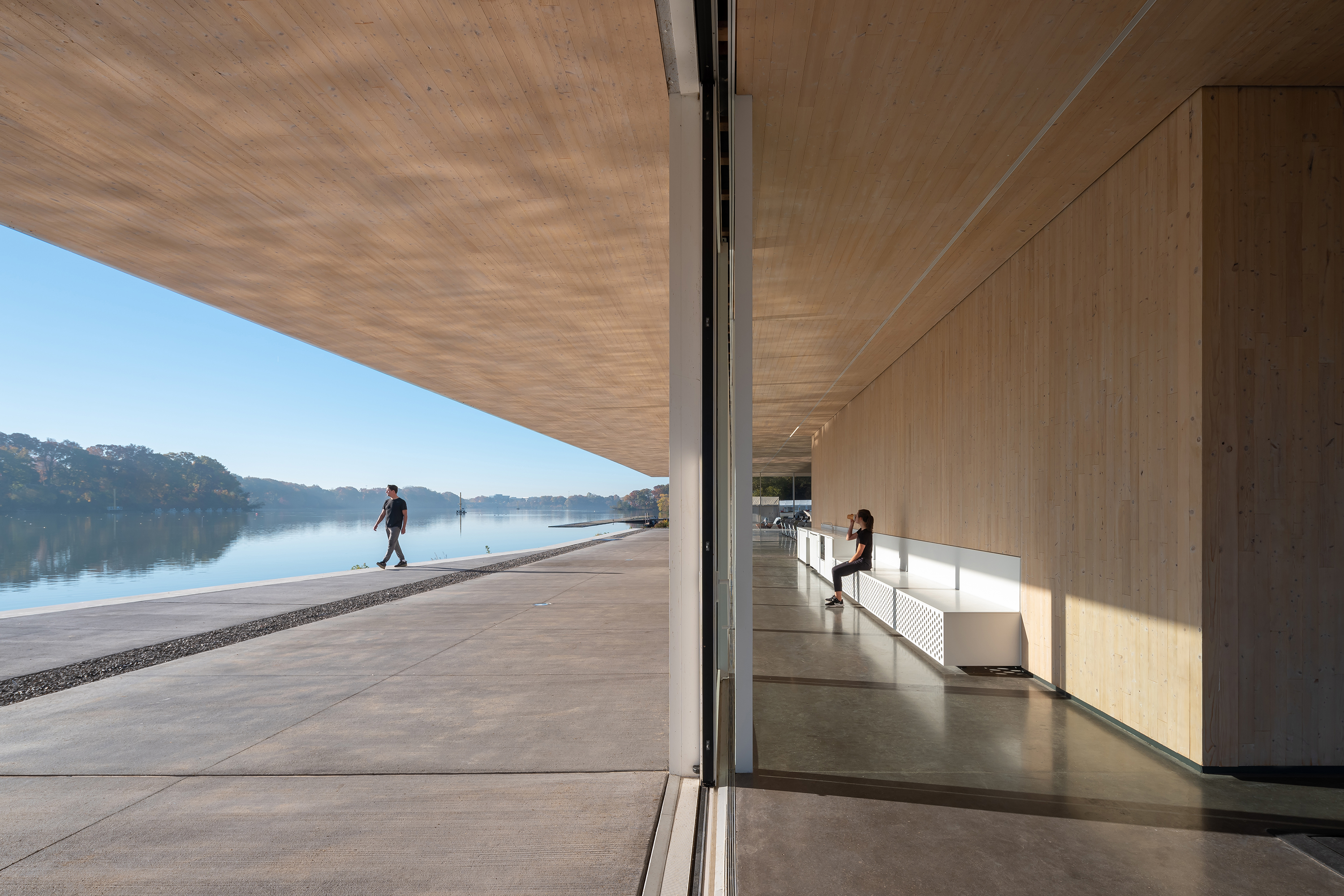
Life/Adaptability
The building showcases significant adaptability through its innovative design and use of materials. The mass timber structure not only minimizes embodied carbon, but also supports future deconstruction and reuse, further promoting sustainability. Its open layout and large sliding doors facilitate versatile use, making it an ideal space for community gatherings and events. Additionally, the integration of Integrated Energy Performance software allows users to engage with the building’s energy usage, encouraging sustainable habits. This thoughtful design ensures that the NCRC can evolve with the community's needs while maintaining its commitment to environmental responsibility.
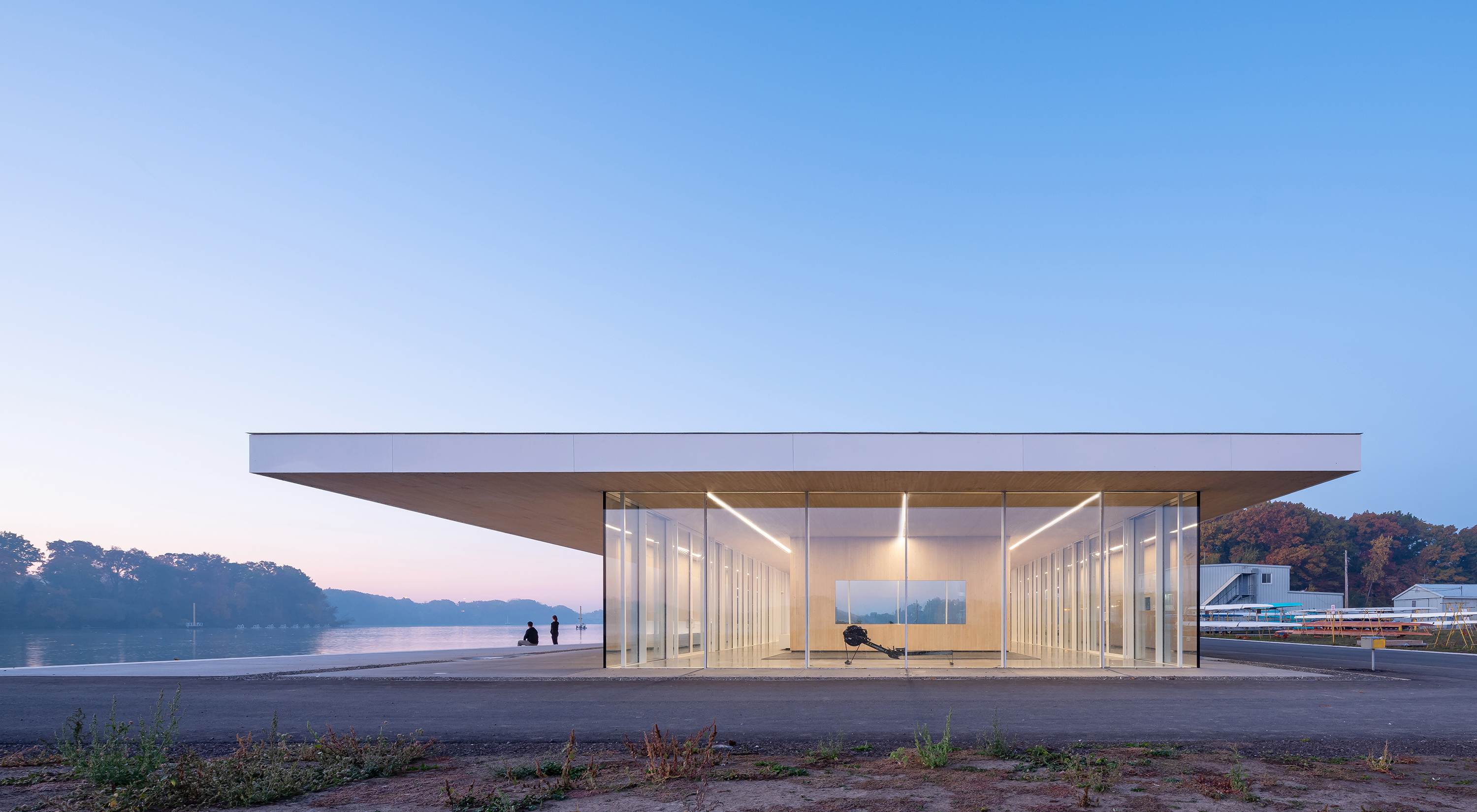
Community
The facility was designed to foster both spatial and social connectivity while prioritizing inclusivity. Accessible from all sides, the building provides level, unimpeded access throughout its interior space. Notably, this facility marks a significant milestone for Henley Island, offering fully accessible washrooms for the first time, all of which are gender-neutral. Full-height sliding glass doors create expansive 4-meter-wide openings that connect directly to the sheltered exterior plaza surrounding the building, allowing individuals with mobility devices to enjoy community gatherings by the waterside. The new stepped edge and sliding glass doors enhance contact with the water, bringing racers and supporters closer together and strengthening the relationship between the building and Martindale Pond.

Project Team
Architecture and Design Team:
MJMA:
Robert Allen
Ted Watson
Tarisha Dolyniuk
Andrew Filarski
Tim Belanger
Tyler Walker
Dan Kronby
Matt Lamers
Brad Augustine
Monica Leung
Timothy Lai
Raimondo + Associates Architects:
Emilio Raimondo
Brennan Klys
Structural:
Blackwell
Mechanical/Electrical:
Smith + Andersen
Civil:
Upper Canada Consultants
Contractor:
Aquicon Construction
Interiors:
MJMA Architecture & Design
Sustainability:
Footprint
Photography:
Scott Norsworthy
Michael Muraz
